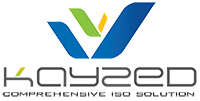Energy Management system EnMS
What is ISO 50001?
ISO 50001 is a standard that provides requirements and guides organizations looking to establish, implement, maintain and refine energy management systems. The standard is based on the best practices throughout the world, essential for making businesses sustainable. It was published in 2011 and is becoming increasingly popular. It is designed to help organizations carefully manage energy consumption in their processes, identify opportunities for improvement and avoid wasting resources.
The standard provides a standardized methodology for measuring energy consumption through individual processes, and helps align it with sustainability efforts.
ISO 50001 adheres to the high-level structure already used by other standards, such as ISO 9001 and ISO 14001. Both are based on the concept of PDCA (PLAN-DO-CHECK-ACT), adopted by ISO, and focus on the continuous improvement cycle. This means that the company must constantly seek ways to optimize energy use.
The benefits of pursuing an ISO 50001 are manifold, from supporting energy reduction and improving bottom lines, to enhancing business strategies. An ISO 50001 will:
- Identify risks and opportunities: the process will help identify energy risks, areas of significant energy use, and opportunities for improvement, by providing a better understanding of the energy profile of an organisation. These opportunities, when acted upon, drive energy use reduction and increase efficiency. Improvements may be in the form of behavioural change initiatives or technological improvements which would bring down a building’s baseload. The identified risks may include aging infrastructure which may cause increased maintenance costs and disruption to operational activities.
- Achieve significant cost savings: reduction in energy usage and efficiency improvements will ultimately help to improve the bottom line. Carbon related taxation has steadily increased in the recent past, with the Climate Change Levy increasing 45% from 2018/19 alone. Therefore, reduction in energy consumption will also directly reduce the carbon taxation burden on organizations.
- Drive carbon emissions reduction through decreased energy consumption, as well as support setting and progressing against ambitious climate targets by ensuring robust and accurate energy data is being collected.
- Support compliance with environmental regulations: An ISO 50001 may be used as a compliance route for Article 8 of the EU Energy Efficiency Directive (EU EED) / ESOS in lieu of carrying out energy audits, potentially reducing costs associated with compliance requirements. It will also support requirements for other legislation such as the Streamlined Energy and Carbon Reporting (SECR) and improve voluntary sustainability reporting.
- Enhance an organization’s reputation and environmental credentials among internal and external stakeholders, providing a competitive advantage as a widely recognized environmental standard.
- Provide a potential stepping-stone to other sustainability initiatives: In our experience implementation of such a standard engages senior management and other colleagues around an environmental ambition and the positive results support future business sustainability strategies and aid swift decision making.
Who should implement ISO 50001
Like all ISO management system standards, ISO 50001 has been designed for implementation by any organization in the public or private sector, whatever its size, activity or geographical location. ISO 50001 does not fix targets for improving energy performance, which is left up to the user organization or regulatory authorities. This means that any organization, regardless of its current level of energy performance, can implement ISO 50001 to establish a baseline and improve on it at its own rate.




